I have wanted to sound like David Gilmour since I first started playing the guitar over 20 years ago.
I can still remember hearing the solo in ‘Time‘, and in that moment becoming acutely aware of the potential of the electric guitar.
To this day David Gilmour remains one of my favourite electric guitar players, and is a continued source of inspiration.
I know that there are many guitarists who hold Gilmour in similar esteem.
In fact, I think that Guitarist magazine summed it up perfectly when they described David Gilmour as a player that has an almost ‘universal appeal’ to other guitarists.
The magazine attributed this appeal to three different elements: Gilmour’s tone, the sense of space that he leaves in his phrasing, and his soulful vibrato and bending techniques.
So, whilst David Gilmour is certainly not a classic blues guitarist, some of the key elements of his playing style are critical in the blues.
As such, there is a lot that we can learn from him – both with regards to his tone and playing style.
The latter is an involved topic, and one that I will cover in more depth in a future article or course inside The Blues Club.
In this article then, I will be looking at David Gilmour’s tone and gear. Specifically, I will cover some of the key pieces of gear that Gilmour has used during his career, and how you can recreate these to suit your own playing context and budget.
So with that in mind, let’s get into it!
Opening thoughts
David Gilmour has been regularly recording and performing – first with Pink Floyd and then as a solo artist – for over 50 years. During this time, he has played a wide variety of different guitars and his setup has also changed to reflect developing technology and the demands of touring.
Not only this, but during his career, Gilmour has created a wide range of different tones.
In this sense, his gear and approach is quite different to that of more classic blues guitarists like B.B. King, Peter Green and Stevie Ray Vaughan. All of these players – and many other notable blues guitarists – adopt a core tone, and then make small alterations to that tone.
Of course, they might occasionally diverge from this tone with the use of more reverb, overdrive or perhaps a choice effect like wah-wah (in the case of Stevie Ray Vaughan).
Broadly speaking though, the tones you expect to hear on the classic albums of these players are all fundamentally quite similar.
This is not true for David Gilmour.
On iconic Pink Floyd albums like The Dark Side Of The Moon, Wish You Were Here and The Wall, Gilmour crafts a wide range of tones.
Some of these are more classic blues and blues rock guitar tones. Many of them however, are more ambient guitar tones.
I will cover some of these ambient effects where I think they cross over with classic blues and blues rock tones. I won’t however be doing a deep dive into all of the modulation effects that Gilmour used to create some of the more psychedelic guitar sounds with Pink Floyd.
Equally, I won’t be documenting all of the small changes in setup that Gilmour has made, or his use of acoustic or lap steel guitars.
If you are interested in learning about these elements of Gilmour’s rig, then I would recommend checking out either Gilmourish or Ground Guitar.
Although copies are hard to track down (and also very expensive) the book ‘Pink Floyd: The Black Strat‘ by Gilmour’s guitar tech Phil Taylor is another brilliant resource for detailing how Gilmour has adapted his setup over the years.
Instead in this article, I will be covering the key elements of Gilmour’s rig, and how you can recreate the lead guitar tone you hear on songs like ‘Comfortably Numb‘, ‘Time‘ and ‘Another Brick In The Wall, Pt. 2‘.
So with that in mind and without further ado, here is everything you need to sound like David Gilmour.
The ‘Black Strat’
Although David Gilmour has played a variety of different guitars in his career, he is best associated with the Fender Stratocaster.
Of these he has also played a variety. However none have played a more significant role in his career than the aptly named ‘Black Strat’.
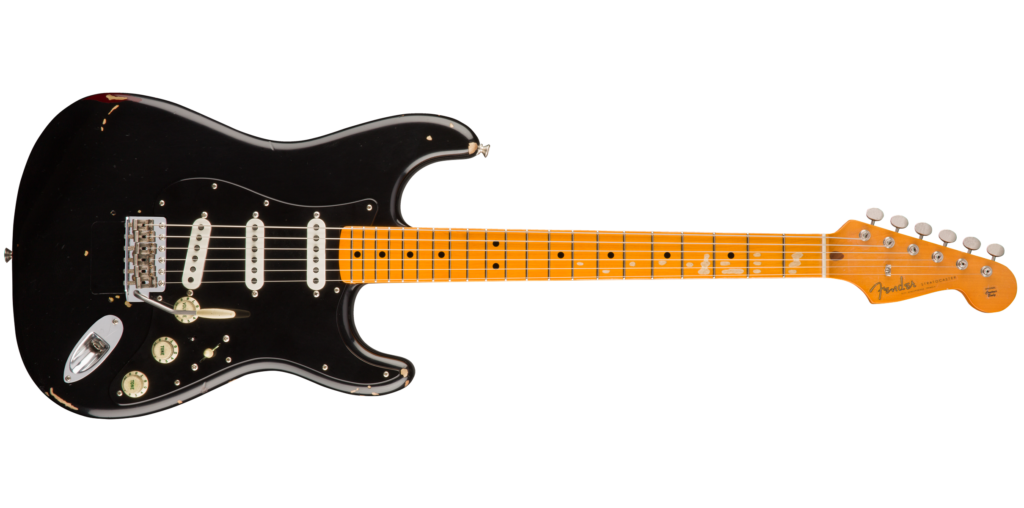
The Black Strat is a 1969 model that Gilmour purchased from Manny’s Music in New York, in 1970.
Apart from a 10 year period in which the guitar was placed on display in the Hard Rock Café in Dallas, Texas – the Black Strat was Gilmour’s main guitar, both in the studio and when touring.
In Gilmour’s own words:
It has been on pretty much all the Pink Floyd albums through the Seventies. It’s on Meddle, Dark Side of the Moon, Wish You Were Here, Animals, The Wall. I did my ‘Comfortably Numb’ solo on it. The notes for the beginning of ‘Shine On You Crazy Diamond’ fell out of it one day
David Gilmour
The Strat remained Gilmour’s main guitar up until recently, when he sold it at a charity auction in 2019 for almost $4 million; at the time the highest sum for which a guitar had ever sold.
As you might expect, the guitar has long been of interest for the role that it played in the creation of some of the most iconic riffs and solos of all time.
However, part of why it has been the focus of such intense scrutiny in books and online is because of its history of modification. Throughout the 1970s, Gilmour made a number of significant modifications to the guitar, including:
- Changing the neck
- Adding a humbucker pickup in between the regular single coil pickups
- Altering the single coil pickups in the guitar
- Adding a locking nut and Kahler tremolo bridge
In fact, Gilmour appeared to adopt a very pragmatic approach to the instrument, calling it ‘the tool of his trade’, and stating that ‘it’s a 1969 Fender Stratocaster, of which thousands and thousands were made’.
Many of the modifications that Gilmour made to the guitar were fleeting. So whilst they remain of interest to Pink Floyd fans and gear enthusiasts, in my opinion they are not worth taking into account if you are trying to recreate Gilmour’s iconic tones.
Having said that, there are a few key modifications that are note worthy. Not all of these have an impact on tone. However they are worth considering if you want a Strat with a similar look and tone to Gilmour’s original.
Let’s look at some of the most significant of these modifications:
Neck material
The original Stratocaster that Gilmour purchased had a maple neck, and it is this neck – in contrast to the all black body and pickguard of Gilmour’s Strat which makes the guitar so visually distinctive.
However it is worth noting that whilst recording The Dark Side Of The Moon, GIlmour replaced the neck with one of rosewood. He kept this on the guitar until 1978, which means that he actually played using a rosewood neck for many of Pink Floyd’s most notable albums.
Within the context of a full rig that includes various different effects pedals, I am not convinced that there is a great tonal difference between maple and rosewood necks. I do however, believe that they have a different feel.
As such, I would recommend choosing a Stratocaster with a neck that feels comfortable to play and appeals to you visually, rather than feeling compelled to choose a Stratocaster with a maple fretboard.
Black pickguard
One of the key visual elements of the ‘Black Strat’ is – as the name suggests – its all black colour. Gilmour made this modification in 1974, switching out the original white pickguard for one that matched the colour of the Strat.
This made no tonal difference to the guitar, however it does play a significant role in the look of the guitar. So if you want to replicate the look of Gilmour’s guitar and you have a black Stratocaster – or you opt for one of the guitars linked below – adding a black pickguard makes sense.
Either a 1960s or 1950s style pickguard would be my top choice, and you can pick these up for around $35/£28 at the time of writing.
Shortened tremolo arm
David Gilmour often uses a tremolo arm when playing lead – to add life to long, resonating notes when playing with a clean tone, and to add a more intense style of vibrato to his playing when using overdrive.
As such, if you want to sound like David Gilmour, it is important to use a tremolo arm as part of your playing.
Of course, a standard tremolo arm will allow you to execute these ideas. It is worth noting though that from the 1980s, Gilmour started using a shortened tremolo arm of 4.25″.
By comparison, regular tremolo arms typically have a length of around 6″.
The largest impact here is on playability. A shorter tremolo arm takes up less space on the guitar and so makes it easier to move out of the way for those moments where you don’t want to use it.
I also suspect however that it impacts the way that you use the tremolo. With a shorter tremolo arm you are closer to the bridge and I would imagine that any movement would be translated in a more direct way through the tremolo.
This difference is likely to be minimal. However if you want to sound like David Gilmour and you find normal sized tremolo arms to be cumbersome, you can easily buy a smaller tremolo arm like this one here.
Pickups
During the 1970s, Gilmour also made a number of modifications to his pickups. These had a greater impact on his tone and so are worth considering.
The first change he made came in 1972 when he altered the 3 way selector switch on his Strat. This included a middle position which allowed him to play the neck pickup with either the middle or bridge positions.
Shortly after this, Gilmour then routed out the whole body of the Strat and added a Gibson P.A.F. humbucker pickup in between the middle and bridge positions. So at this point, Gilmour’s Strat had 3 single coil pickups and a humbucker.
Gilmour used this unconventional setup for the recording of The Dark Side Of The Moon, before getting rid of the humbucker and replacing the pickups with those from a 1971 Stratocaster.
In the second half of the 1970s, Gilmour then switched out the bridge pickup with a DiMarzio FS-1, which he used on both the Animals and The Wall recordings.
After recordings for The Wall were finished, Seymour Duncan sent Gilmour a set of custom pickups to try. These were an early prototype of what would become the Seymour Duncan SSL-5 pickups, and Gilmour has used them ever since.
As such, if you want to sound like David Gilmour, I would recommend looking at the pickups in your guitar.
If you have a vintage Strat or a guitar modelled on Gilmour’s original, then it is likely that the pickups will either be a replica of those in the Black Strat, or of a similar output.
If not, then it might be worth looking at a vintage set of pickups. The Seymour Duncan SSL-5 set would be the obvious choice, with the DiMarzio FS-1 pickups as the second best option.
The Fender Custom Shop ’69 Pickups would also make a great choice if you are looking for a set of vintage style pickups and want to sound like David Gilmour.
EMG pickups
It is worth noting quickly at this point, that David GIlmour is often associated with EMG ‘active’ pickups. As such, if you have searched for the specifics of Gilmour’s rig prior to this point, it is likely that these have crossed your radar.
Gilmour did use these throughout the 1980s in a candy apple red Stratocaster that he named the Red #1.

Gilmour started using this guitar because he had loaned the Black Strat out to the Hard Rock Café.
He was also however, relieved to be using pickups that better dealt with the high powered amps and effects in his setup. In his own words:
Our guitar technicians were constantly struggling to stop buzzes and when you use effect pedals, they tend to amplify all the bad noises. Through the 70s, the battle to not have loud hums and buzzes coming out of your amps was constant, it was a nightmare, and these pickups made by EMG in this guitar prevented that
David Gilmour
Whilst all of this might be true, I would not recommend a set of EMG pickups if you want to sound like David Gilmour.
There are two reasons for this.
Firstly, David Gilmour didn’t use active pickups until later in his career. During the recording of The Dark Side Of The Moon, Wish You Were Here, The Wall and Animals – Gilmour played a Stratocaster with passive pickups.
In other words, he didn’t use active pickups when he was crafting and performing many of his most iconic guitar solos.
Additionally, in my opinion EMG pickups don’t give you the warm and natural break up you get from passive pickups. They are much more powerful and so generally speaking, help you to play with either a very distorted tone, or a very clean tone.
It is for this reason that there are very few famous blues and blues rock guitarists that have used active pickups. It is also why they are instead often favoured by guitarists playing heavier styles of music.
I would in fact argue that you can hear the difference in Gilmour’s tone on A Momentary Lapse Of Reason and The Division Bell – the two albums that he recorded using these pickups.
I still think that his tone is wonderful on these albums. However I do feel that it lacks a little of the raw and bluesy breakup that you hear on Pink Floyd’s earlier records.
Keeping these points in mind – if you still want to give a set of EMG pickups a try, you can buy a pre-wired David Gilmour pickguard like this one here for $329/£255 at the time of writing.
Guitars
At this stage, you might understandably be wondering which guitars you should consider in your quest to recreate David Gilmour’s tones.
The good news here, is that the answer is quite simple. For whilst it is easy to find yourself deep in the rabbit hole studying all of the different modifications that Gilmour made to his Strat; at its core it is a vintage Stratocaster, with vintage pickups.
Not only this, but aside from Gilmour’s long association with the instrument, his Stratocaster is not notable as being one of Fender’s finest instruments.
Built in 1969, the Strat was made in the early CBS Fender era where it is generally accepted that the quality of guitars declined. It is for this reason that pre-1965 Fender Stratocasters sell on sites like Reverb for much more than those manufactured in the late ’60s and ’70s.
With this in mind, if you are looking for a guitar to sound like David Gilmour, I would recommend going for a vintage Fender Stratocaster, a reissue model, or a cheaper replica.
I don’t believe you need to go for a 1969 Stratocaster or one modelled on that year (which are not at all common, as it was not a notable year for production). Instead I would look at vintage style Strats modelled on those from the pre-CBS era.
The great news here, is that there are options across a wide range of prices.
In the lower price range, there are some great Fender Squier Stratocasters. Some of my top options here are as follows:
- Squier Affinity Stratocaster
- Squier Classic Vibe ’60s Stratocaster
- Squier Classic Vibe ’50s Stratocaster
In the middle price range, the Mexican made Fender range produce some great guitars. A number of different options to consider here are as follows:
Beyond that and if your budget allows, there are some brilliant American made Fender Strats. Some different options to consider here are as follows:
- Fender American Vintage II 1961 Stratocaster
- Fender American Professional Stratocaster
- Fender American Vintage II 1957 Stratocaster
Finally, if you are looking to spend a bit more and make an investment, then there are some beautiful Fender Custom Shop models out there.
These models change all of the time. However if you are looking in this price range, then a guitar built to replicate a late ’50s or early ’60s Strat would work very well.
Some good examples are as follows:
- Fender Custom Shop Heavy Relic Poblano Stratocaster
- Fender Custom Shop ’56 Stratocaster
- Fender Custom Shop ’63 Stratocaster
Starting in 2008, the Fender Custom Shop released a David Gilmour Signature Stratocaster, but they ceased production of it in more recent years (2016, I believe).
If you want to get as close as possible to The Black Strat, then this of course is your best option. However the only available options now are second hand, and also very expensive.
For example, at the time of writing, second hand versions of the Strat are selling on Reverb for prices starting at $8000/£6300.
So if you are interested in authenticity and looking in a higher price bracket, one of these Signature Strats would be a brilliant option.
Beyond that, all of the guitars listed above will help you to sound like David Gilmour. You can then decide how far you would like to tweak and modify the guitar to get closer to Gilmour’s Black Strat.
Amps
When it comes to amps, replicating David Gilmour’s setup becomes a little more challenging.
This is not because he used a wide variety of amps; nor did he or his techs make any significant modifications to his amps.
In fact, throughout his career, Gilmour has been almost solely associated with British company Hiwatt.
Specifically, between the late 1960s and early 2000s, Gilmour used a 100 watt Hiwatt DR103 head, which he played through 4×12 WEM (Watkins Electrical Music) Super Starfinder 200 cabinets with 4×12” Fane Crescendo speakers.
The only noticeable addition to this is that from the early 1970s, Gilmour used an Alembic F-2B preamp. This powered Yamaha RA-200 rotary speaker cabinets, which Gilmour used on certain tracks to creating swirling, Leslie style effects. In guitar tech Phil Taylor’s words:
One day we decided to use (an Alembic F-2B preamp) to power Dave’s Yamaha RA-200 revolving speaker system, and discovered that the amp just generated a nice warm tone. It shouldn’t really be a surprise – it basically uses a Fender circuit
Phil Taylor
From the late 1980s, Taylor and Gilmour started using the preamp in place of the preamp on the Hiwatt. However, during the years in which Gilmour was recording and performing Pink Floyd’s most iconic albums, he was still using the preamp section from the power amp.
The challenge
In my opinion, it is always the amp setups of legendary guitarists which present the biggest obstacle for guitarists trying to create the same tones at home. Generally speaking, there are a couple of significant reasons for this:
The first and most significant of these relates to volume. During the 1960s and 70s, most guitarists used large amps and cranked these amps to full volume. Doing so typically caused these amps to overdrive and create a specific sound which results from the amp and speaker overdriving.
You can approximate this sound with pedals, but playing at a lower volume will never give you quite the same results.
The second and related reason which applies when you are trying to sound like David Gilmour is headroom.
Headroom simply refers to the amount of power your amp can provide before it starts to break up.
When you play an amp with a lot of headroom, you can play it at very loud volumes, whilst maintaining a clean tone. Conversely, when you play an amp with limited headroom, your tone will start to overdrive at much lower levels.
The Hiwatt amps that Gilmour used have huge amounts of headroom, and he always ran them to sound clean.
Having an amp with this much headroom and running it at high volumes is very challenging if you are doing most of your playing at home (unless your neighbours really love Pink Floyd!)
The final element that makes Gilmour’s amp setup challenging to recreate, is its specificity.
Hiwatt amps have a very particular sound which is quite unlike other brands. They are British voiced amps but they lack the mid range push and aggressive top end that you hear with Marshall and Vox amps.
Not only this, but Gilmour paired his Hiwatt heads up with Fane speakers. The way that these specific speakers respond and break up is also unique and unlike some of the more common speakers you might find in other amp brands.
In this way, Gilmour was using a very specific rig with components that really defined his sound and which are difficult to recreate with other amps and speakers.
Amp options
Before you despair and give up on trying to sound like David Gilmour – I have two pieces of good news!
The first of these is that most of the challenges above relate to recreating Gilmour’s clean tone. However many of Gilmour’s most iconic tones were crafted with the use of overdrive and fuzz pedals.
So if you are more interested in dialling in the tones from ‘Comfortably Numb‘ than ‘Shine On You Crazy Diamond‘ then having super clean tones at high volume is not so relevant.
Additionally, just because you are not running a 100 watt amp into 4×12 cabinets, does not mean that you can’t dial in a range of beautiful clean tones. It just means that your tone will be an approximation of Gilmour’s original, rather than identical.
With that in mind then, what are some of the best amps out there if you want to sound like David Gilmour?
To begin with, I would recommend looking at the Hiwatt range.
As it happens, Hiwatt still make the DR103 that Gilmour uses. So if you are not constrained by playing volume, that would be the obvious choice.
Beyond that, one of the smaller Hiwatt models might be more suitable. Some of my top choices here are as follows:
All of these amps are based around a similar circuitry to Gilmour’s DR103. The key difference is in their size and wattage.
In each case this reduces their power and headroom, making them more suitable for guitarists not exclusively playing in large venues.
So if you are constrained by your playing volume and can accept your amp breaking up at lower volumes, one of these amps would make a great choice.
If you would like a Hiwatt amp but are looking in a lower price range, then I would recommend looking at the CeriaTone ‘HeyWatt’ 504.
CeriaTone have a strong reputation for building great value clones of famous amps and pedals. So if you are looking for a Hiwatt style amp in a lower price range, this would be my top choice.
Beyond that, if you want to sound like David Gilmour but don’t want to go for a Hiwatt or a Hiwatt style amp, I would recommend looking at pedal platform amps.
I outlined 15 different options in this article here, however some of my top options here – keeping Gilmour’s tones in mind – are as follows:
David Gilmour never used these amps in his career, nor are they amps that are based on the Hiwatts that he did use. As such, if you are interested in authenticity, I would not recommend one of these amps.
However, if you want a killer tube amp that will help you create beautiful clean tones and provide a great platform for pedals, one of these amps would make a great choice.
Pedals
Once you have your guitar and amp setup in place, the final and significant part of the signal chain to look at is pedals.
David Gilmour uses effects pedals for two different purposes.
The first of these is to create overdriven sounds. As Gilmour’s tech Phil Taylor noted:
The way in which Dave uses his system is that he always gets a good, nice powerful clean sound‚ a lot of his sounds are basically clean with a bit of delay‚ and when he does his overdriven stuff, he introduces various pedals
Phil Taylor
The second are the modulation effects that Gilmour uses to create more ambient guitar sounds.
Let’s look at these in turn:
Fuzz
The effect with which David Gilmour is arguably best associated, is fuzz.
In the earlier years of Pink Floyd, Gilmour used a Dallas Arbiter Fuzz Face. He initially opted for a model with germanium transistors, before switching to use a silicon based model in 1971.
In 1976, Gilmour then switched fuzz pedals again to start using the Electro-Harmonix Big Muff Pi.
As you can read in more detail here, over the course of his career, Gilmour has used a variety of different Big Muff pedals. This included both the ‘Ram’s Head’ and ‘Triangle’ models – both named because of the configuration of their controls.
In the early years of the Big Muff, there were also inconsistencies in production of the pedal, which led to models of the same type sounding quite different.
Not only this, but the way that Gilmour combined fuzz with other elements of his rig and the way this was captured on recordings also changed.
Specifically, in many of the recordings, Gilmour’s tone was manipulated with added compression and extensive use of EQ to round off some of the harsher or ‘muddier’ elements of the fuzz sound.
Again then, when it comes to recreating Gilmour’s fuzz tone, it is important to keep these points in mind. To get the kind of fuzz tones you want, it is likely that you will have to tweak your guitar’s volume and tone controls, as well as the EQ controls on your amp.
Before you get to that point though, it is important to choose the right fuzz pedal for your setup. The good news here is that Electro-Harmonix have released reissues of the early fuzz pedals that Gilmour used:
I would recommend opting for the Ram’s Head if you are looking for a sweeter, ‘violin’ style sustain from your fuzz, and the Triangle if you want more aggression and gain.
When combined with the right amp and setup correctly, both of these pedals will help you to dial in some beautiful vintage fuzz tones.
Boost & overdrive
From the early 1970s up until the 1990s, David Gilmour used the Colorsound Power Boost pedal alongside his fuzz pedals.
Although it is uncertain on which specific tracks Gilmour used the pedal, it is believed that he used it during many live performances during the mid 1970s, as well as on the Wish You Were Here and Animals albums.
Gilmour used the boost after the fuzz pedal in his chain. In this way, engaging the pedal gave him a volume boost, and also allowed him to EQ and tighten up his fuzz tone.
This particular boost has a wide gain range and can act like an overdrive, especially if you are pushing your amp to the point of break up.
Macari’s Music Exchange in London – who sold the original Colorsound – still sell faithful reissues of the pedal, which you can buy online here.
As such, if you want to sound like David Gilmour and are interested in authenticity, this would be my top choice.
If you would prefer to look at further options however, there are a number of clones of the pedal. Some of the best options are as follows:
Some of these pedals – like the Tru-Fi Colordriver – have stuck very close to the original design of the pedal. Conversely, the ThroBak Overdrive Boost has a range of different features that aim to improve upon the original.
Despite these variations, like the original – all of these pedals have a wide gain range. In this way you can use them as a light boost to stack with a fuzz, or as a standalone pedal to create heavy vintage overdrive tones.
B.K. Butler Tube Driver
The other overdrive pedal with which David Gilmour is often associated, is the B.K. Butler Tube Driver.
This is a boutique, hand wired overdrive pedal used by a number of famous guitarists, including Billy Gibbons and Eric Johnson.
Gilmour has used the pedal since the early 1990s – most notably during the recording of Division Bell and the ‘Rattle That Lock’ tour.
During the latter, Gilmour stacked multiple Tube Driver pedals together. When doing so, he set each pedal up differently to create a wide range of tones.
If you are looking for a versatile overdrive pedal that will help you dial in a range of killer blues and blues rock tones, this could make a great addition to your rig.
Having said that, if you are more interested in the ‘classic’ tones of Gilmour in Pink Floyd, I would opt for the Colorsound or one of its clones.
This was the pedal he used during the 1970s. Combined with a Big Muff fuzz, it will go a long way in helping you to recreate the classic tones you hear on songs like ‘Comfortably Numb‘.
Delay
After fuzz and overdrive, delay is the next key effect you need to consider if you want to sound like David Gilmour. Up until the late 1970s, Gilmour used a Binson Echorec 2. As he explained in a 1993 interview with Guitar World:
The Binson was an Italian made delay unit. It was strange because it didn’t utilize tape loops. Instead, it used a metal recording wheel. You could get some wonderful delay effects that aren’t attainable on anything that’s been made since. ‘One of these Days’ evolved from some of my experiments with the Binson, as did ‘Echoes’
David Gilmour
As far as I am aware, Binson are no longer trading.
You can buy second hand version of the unit on Reverb, although because of their reputation and scarcity, they currently sell for around $5000/£4000.
Fortunately, there are a variety of Echorec clones, some of the best of which are as follows:
As a result of the quality of the original and the iconic tones that David Gilmour crafted with the Binson, the majority of these clones are also in a higher price range.
However if you really want to sound like David Gilmour, any of these pedals will make a worthy investment.
They will help give your playing the same spacious and open quality, and recreate some of the specific delay effects you hear on songs like ‘Echoes‘.
Reverb
Considering the amount of content around David Gilmour’s setup online, there is surprisingly little about his use of reverb.
From what I understand (but please let me know in the comments if I am mistaken!), Gilmour’s use of the Echorec created a sound which gave his tone a reverberating quality. As such, it doesn’t appear that he had a specific reverb tank or pedal.
Having said that, reverb is a key element of any spacious guitar sound. As such, if you want to sound like David Gilmour, I would recommend adding a reverb pedal to your setup.
This is particularly the case if you also want to create a range of further classic blues and rock tones.
If you have an amp that already includes reverb, then you are set up and ready to go. However if not, I would recommend adding one to your rig. Some different options to consider are as follows:
- Strymon Flint Tremolo and Reverb
- MXR M300 Digital Reverb
- TC Electronic Hall of Fame 2
- Electro-Harmonix Holy Grail Nano Reverb
Any of these pedals will help you to create the open and spacious guitar tone you can hear on classic Pink Floyd records.
If budget is of less concern and you would like a greater variety of options, I would recommend the Strymon Flint as my top choice. Conversely, if you are interested in simplicity and want to keep the cost of your setup down, I would go for the Holy Grail.
Further modulation effects
Up to this point, all of the effects that I have covered are essential if you want to sound like David Gilmour.
At this point though I think it is worth mentioning a couple of additional modulation effects like flanger, phaser and Uni-Vibe, which will help you to recreate the specific sounds that Gilmour used on songs like ‘Have A Cigar‘, ‘Learning To Fly‘ and ‘Time‘, amongst others.
Let’s look at each of these in turn:
Flanger
Gilmour used the Electro-Harmonix ‘Electric Mistress’ between the late 1970s and mid 1980s. He also used the same pedal much more recently on the 2015-2016 Rattle That Lock Tour.
The original pedal is no longer in production, and although you can find them on Reverb, they currently sell for prices starting at $650/£500.
The good news though, is that Electro-Harmonix have released a reissue of the pedal, which you can find here.
As such, if you want to recreate Gilmour’s flanger tone on songs like ‘Pigs (Three Different Ones)‘, ‘Dogs‘ and from a number of different songs on his 1978 album, David Gilmour – this would make a great addition to your rig.
If you would like to consider further options, then the Retro Sonic Flanger or Past FX Elastic Mattress pedals would also make great choices.
Phaser
David Gilmour used a phaser during the 1970s to create the specific effect you hear on songs like ‘Have A Cigar‘ and ‘Shine On You Crazy Diamond‘.
Specifically, he used an MXR Phase 90 pedal. Vintage style versions of these pedals are still readily available, and so would be my first recommendation if you want to recreate this specific effect.
Uni-Vibe
The last modulation effect that could be worth considering if you want to sound like David Gilmour, is Uni-Vibe. In my opinion, this is arguably less essential than flanger and phaser, as it is not so easily discernible on some of Pink Floyd’s iconic tracks.
As such, if budget is a concern, or if you want a more minimalistic pedalboard, then I don’t think you need to worry too much about Uni-Vibe.
If you want to recreate some of the more psychedelic guitar tones you hear on The Dark Side Of The Moon though – and you also like the tones of guitarists like Jimi Hendrix and Robin Trower (both of whom used Uni-Vibe heavily) then it could make a valuable addition to your setup.
Gilmour used a Univox Uni-Vibe pedal. These are no longer in production and originals are both rare and very expensive.
As such, I would recommend going for a modern built pedal based on the original. Some of my top choices here are as follows:
Each of these will help you to replicate Gilmour’s use of Uni-Vibe, and help you to dial in a range of vintage Uni-Vibe tones.
Strings
For almost his entire career, David Gilmour has used GHS Boomer strings. These run in the following gauge: .010, .012, .016, .028, .038 and .048.
As a result, with regards to gauge, these are a fairly average set of guitar strings. If you are interested in authenticity and would like to replicate Gilmour’s setup, then GHS offer a set of David Gilmour Signature Strings in this particular gauge.
Having said that, if you are currently happy with your strings and are using another brand, I wouldn’t feel compelled to rush out and change them. This is simply because there is nothing about the construction, gauge or material of the GHS boomers that are unique or set them apart from other brands.
Of course, it might be worth experimenting to see if you prefer the playability or tone of these strings. There is very little to risk and you might find that you much prefer them to whichever brand or gauge you are currently using.
The only significant point to keep in mind is that whichever strings you use, it is important that you are able to bend them with ease.
Powerful bends that move beyond a single tone are a key part of Gilmour’s lead sound. So if you want to recreate this element of his playing then it is crucial that you are able to bend comfortably.
As such, it is important to find a gauge of string that allows you to do so. For example, if you are currently using .009s and can’t quite hit the larger bends that you hear on tracks like ‘Another Brick In The Wall, Pt.2‘ then I wouldn’t recommend jumping up to .010s.
Instead I would keep building your technique until you can execute the bends confidently with 0.009s, and then try moving up a gauge, should you so wish.
Closing thoughts
As is the case with many of the most famous guitarists of all time, there is a huge amount of information online about the specifics of David Gilmour’s gear and setup.
This is perhaps even more so with David Gilmour. His varied and beautiful tones – combined with the various changes he has made to his rig over the years – have resulted in intense scrutiny of his gear.
It is easy to get lost in this rabbit hole.
So before you spend hours (or potentially days!) and thousands of dollars or pounds trying to recreate the specifics of Gilmour’s rig over the years, spend a little time defining which particular tones over his career most appeal to you.
From there you can use the information outlined here – in addition to the wonderful resources like Gilmourish and ‘Pink Floyd: The Black Strat‘ – to put together a rig that makes sense in your personal playing context.
As part of this, and as a closing point, it is important to remember that you can mix your own ideas and approach alongside the elements of Gilmour’s rig and playing style which most resonate with you. As the man himself stated so eloquently:
I spent a lot of time trying to be Eric Clapton, Jimi Hendrix, Pete Seeger, Leadbelly…all sorts of other people on the guitar…and there was a moment when I actually liked something I played myself and started realizing that what I saw as my deficiencies actually could be turned into my qualities
David Gilmour
So, take the best elements of your playing and tone and use Gilmour’s setup and playing style to inspire and enhance those elements. This will help you to both dial in beautiful tones and improve as a player.
Good luck! Let me know how you get on in the comments – and if you would like personalised support on your rig and playing, considering joining The Blues Club.
Otherwise, I hope you enjoy dialling in those beautiful tones, and I’ll see you soon for another ‘Sound Like’ article 😁
Images
Feature image – dpa picture alliance archive (Alamy)
Long & McQuade, Christie’s, Thomann
References
Gilmourish, Ground Guitar, YouTube, Andertons, Seymour Duncan, Wikipedia, Rolling Stone, Music Strive, Andertons, Wikipedia, Fender, Fane, Hiwatt History, Legendary Tones, Guitar Pedal X, PMT Online, YouTube, Tone Island, Delicious Audio, Reverb, Kitrae, Music Radar, The Gear Page, YouTube, Guitar Gear Finder, Guitar World, Premier Guitar
Affiliate links
Many of the links embedded in this article are affiliate links. As such, if you buy one of the pieces of gear I recommend, or an item from the same store after clicking one of these links, I will earn a small commission.
I don’t recommend pieces of gear that I wouldn’t use myself, and I include these affiliate links to ensure that I can keep this content free. If you have any questions, please feel free to reach out to me on aidan@happybluesman.com.

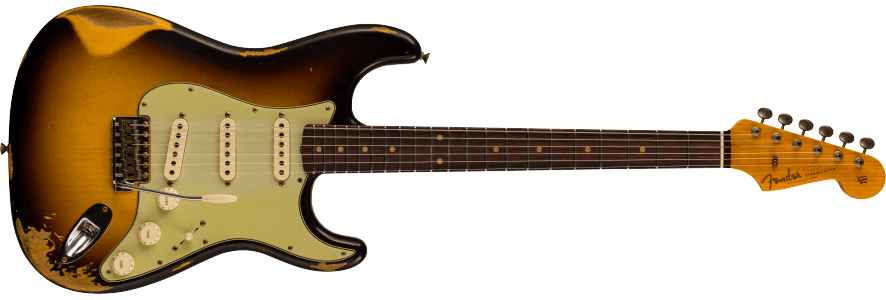
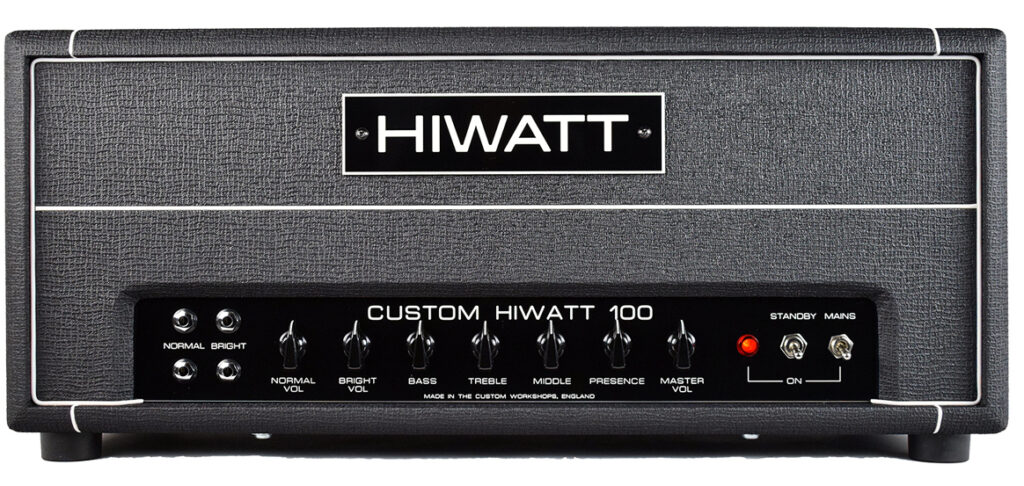
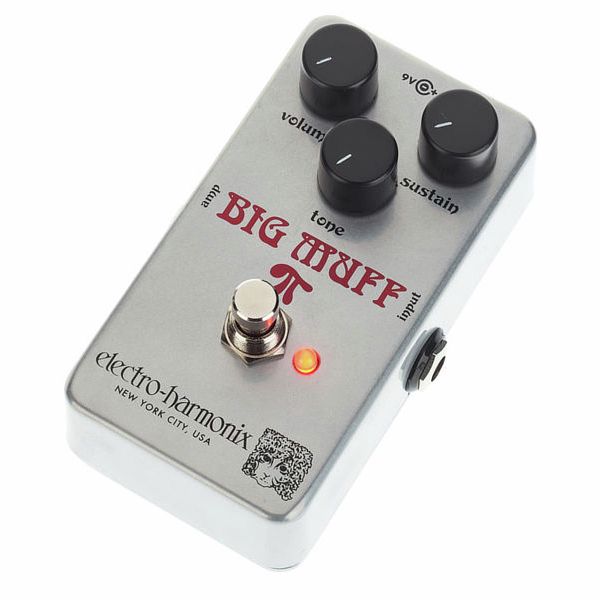
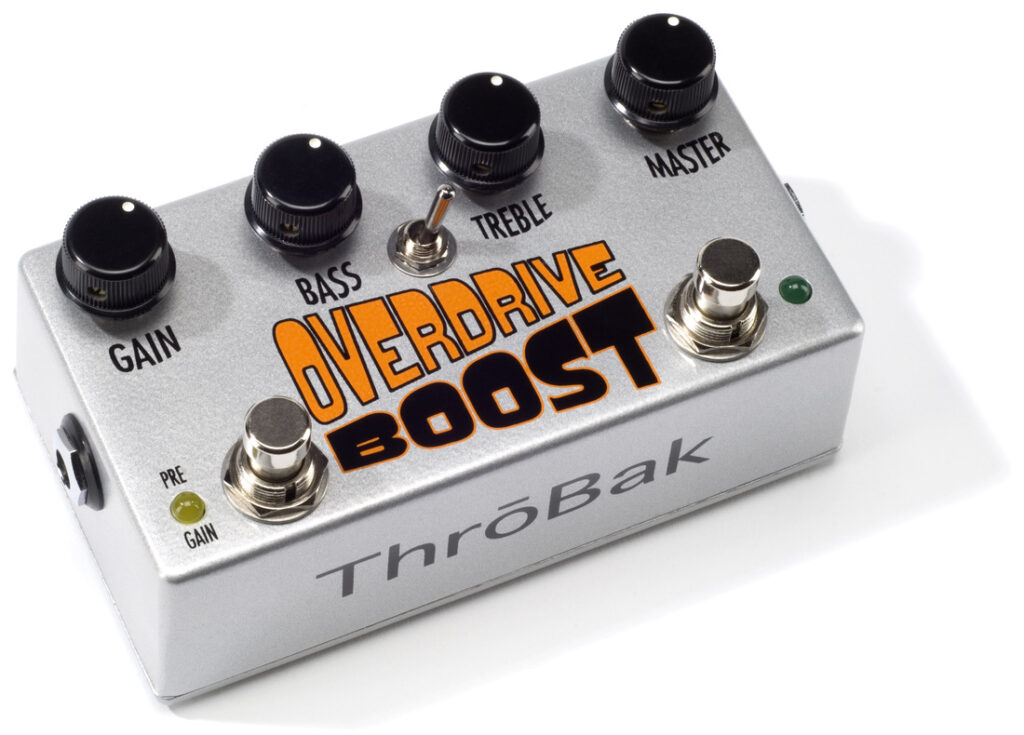
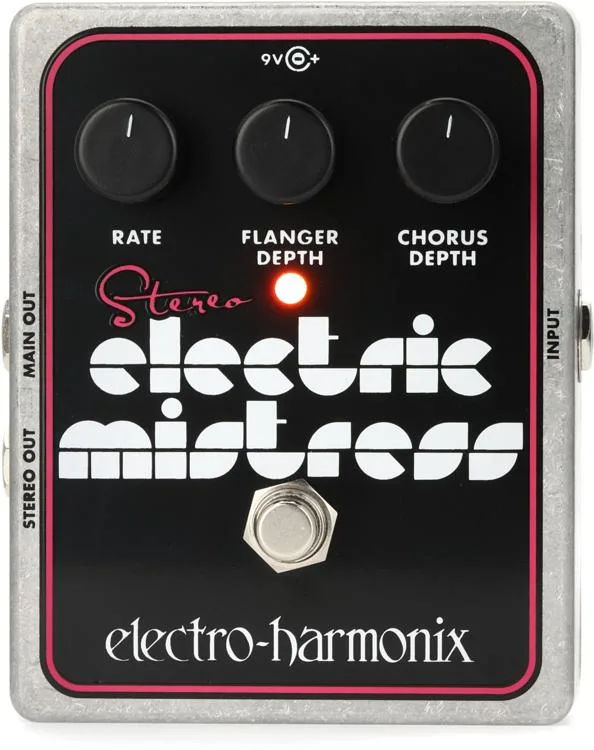

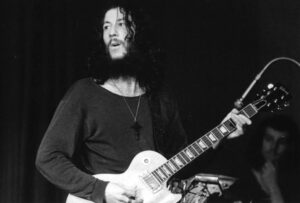

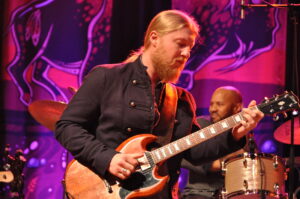
Responses